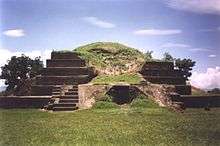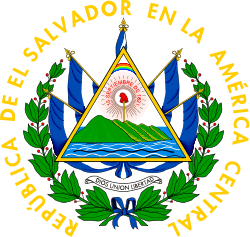Culture of El Salvador
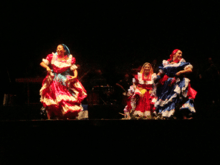
The culture of El Salvador is similar to other countries in Latin America, and more specifically to other countries in Central America. Mestizo culture dominates the country, influenced by culture clash of ancient Mesoamerica and medieval Iberian Peninsula.
Languages
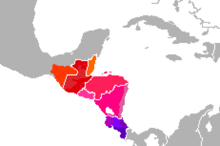
In El Salvador, the official language is Central American Spanish. Less than one percent of the population speaks the Pipil language, in places such as Izalco and several other towns.[1] However, there is no obligation academically or socially today to learn it, and the language is more commonly spoken by the elderly. Amongst the pre-Columbia languages that still exist common to places such as Izalco and Cacaopera is Nawat Pipil. English is taught as a second language and is commonly spoken by business people, as the country is developing through globalization.
Salvadoran Spanish
Central American Spanish is spoken by the majority of the country's population. The language and pronunciation vary depending on the region.
Sports

The main sport played by Salvadorans is association soccer. The Estadio Cuscatlán in the capital San Salvador is the largest stadium in Central America, with a capacity of just over 45,000. The stadium is the home ground of the El Salvador national soccer team, as well as club teams Alianza FC and San Salvador F.C.
The main soccer clubs in El Salvador play in the Primera División, which is made up of the top ten clubs. Below the Primera División exists a second level or Segunda División, made up of 24 teams split into two groups of twelve. There is promotion and relegation between the two divisions at the end of each season.
Religion
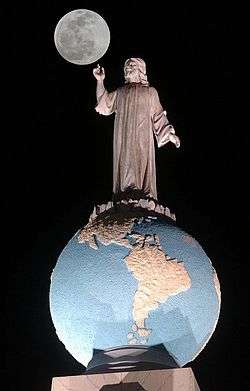
The Catholic Church has been the most prominent religious institution in El Salvador since colonial times, with nearly 75% of the population identifying as Roman Catholic. Reformed churches like Anglican, Lutheran, Pentecostal, and Baptists have experienced significant growth since the 1970s. Seventh Day Adventists, Mormons and Jehovah's Witnesses are also experiencing growth in the nation. Today, nearly 20% of the population belongs to one of these churches. Today, over 40% of El Salvador is Evangelical Christian. Small communities of Muslims, Jews, and Buddhists also exist in some parts of the country.
Costumes relating to religion
In El Salvador, there are different costumes used mostly in religious or other festivals, although in some of the older towns, they are still worn regularly. In female clothing, it is common to see elements like a scapular, a shawl, and a cotton headscarf with different coloured adornments.[2] These can be worn with a skirt and a blouse, or with a dress. The normal footwear is sandals. With male clothing, it is common to see a cotton suit or a cotton shirt, worn with modern jeans, sandals or boots, and a cowboy hat. However, these are rural fashions, and there can be many variations depending on the area.[3]
Music

.jpg)
The music of El Salvador has a mixture of Lenca, Maya, Cacaopera, Pipil and Spanish influences. This music includes religious songs (mostly used to celebrate Christmas and other holidays, especially feast days of the saints). Satirical and rural lyrical themes are common. Cuban, Colombian, and Mexican music has infiltrated the country, especially salsa and cumbia. Popular music in El Salvador uses Xylophone, tehpe'ch, flutes, drums, scrapers and gourds, as well as more recently imported guitars and other instruments. El Salvador's well known folk dance is known as Xuc which originated in Cojutepeque, Cuscatlan. Other musical repertoire consists of danza, pasillo, marcha and canciones.a
Hammocks
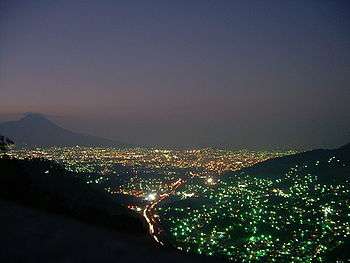
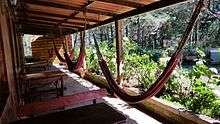
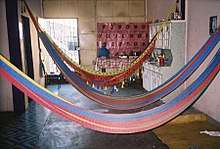
El Salvador is a hammock cultured country, and a large producer and exporter of hammocks. The valley in which San Salvador City sits upon is dubbed "The Valley of the Hammocks" because the Native Americans, used hammocks to repel constant earthquakes. Later, the colonizing Spaniards used the term as an allusion of earthquakes constantly rocking the valley where San Salvador City is, like a hammock. Hammocks are a big part of Salvadoran culture and are often used for afternoon naps. Hammocks swing from doorways, inside living rooms, on porches, in outdoor courtyards, and from trees. Just about everywhere a hammock can be seen hung in all social classes of Salvadoran homes. It is completely socially acceptable to lay around in a hammock all day in this Central American country, that hammocks can be seen from the most humble rural home, to the most prestigious city hotel chains, where there are the colorful and comfortable hammocks. To honor such a pleasure craft, the municipality of "Concepcion Quezaltepeque" celebrates its traditional Hammocks Festival, where artisans produce and sell hammocks as a tradition that begun in 1989 and has been celebrated every year since then, between the first and second weekend of November, it is “The Festival of the Hammocks”. Hammocks are sold in every corner in towns and cities.
Native American Heritage
Lithic era
El Salvador was inhabited by Paleo-Indians, the first peoples who subsequently inhabited, the Americas during the glacial episodes of the late Pleistocene period. Their intriguing paintings (the earliest of which date from 8000 BC) can still be seen and marveled at in caves outside the towns of Corinto and Cacaopera, both in Morazán. Originating in the Paleolithic period, these cave paintings exhibit the earliest traces of human life in El Salvador; these early Native Americans people used the cave as a refuge, Paleoindian artists created cave and rock paintings that are located in present-day El Salvador.
The Lencas later occupied the cave and utilised it as a spiritual place. Other ancient petroglyphs called piedras pintadas (rock paintings) include la Piedra Pintada in San Jose Villanueva, La Libertad and the piedra pintada in San Isidro, Cabañas. The rock petroglyphs in San Jose Villanueva near a cave in (Walter Thilo Deininger National Park) are similar to other ancient rock petroglyph around the country. Regarding the style of the engravings it has been compared by with the petroglyphs of La Peña Herrada (Cuscatlán), el Letrero del Diablo (La Libertad) and la Peña de los Fierros (San Salvador). We can add to the list the sites in Titihuapa, the Cave of Los Fierros and La Cuevona both in ( Cuscatlán ).
Archaic Period
Native Americans appeared in the Pleistocene era and became the dominant people in the Lithic stage, developing in the Archaic period in North America to the Formative stage, occupying this position for thousands of years until their demise at the end of the 15th and 16th century, spanning the time of the original arrival in the Upper Paleolithic to European colonization of the Americas during the early modern period.
About 40,000 years ago the ancestors of the indigenous people of the Americas split from the rest of the world following the Pleistocene megafauna and then they flourish mightily, evolving in the Americas, from the Lithic stage to the Post-Classic stage, which was brought into an abrupt end about 525 years ago with the infamous mass genocide and cultural extinction caused by Europeans intrusion into the Americas, bringing deaseses and colonizing the Americas with warfare, terrorism, extremists radical Christianity and mass massacres. Only some Native American indigenous groups survived that catastrophe, most of them in Mexico, Central America and South America, with Salvadoran indigenous being one of many who have given rise to all modern Native Americans still alive today.
Mesoamerican-Isthmus cultures
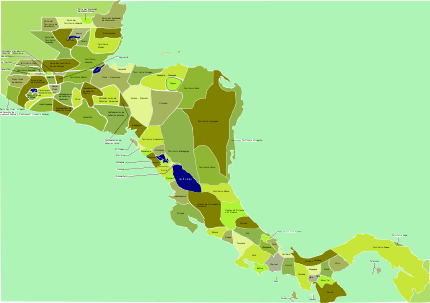
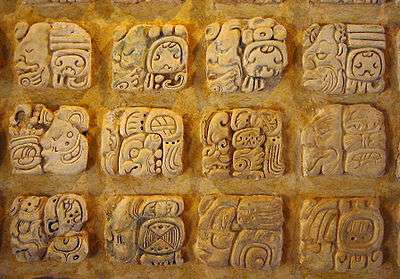
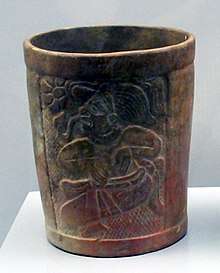
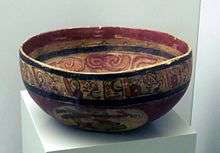
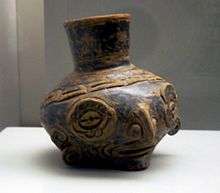
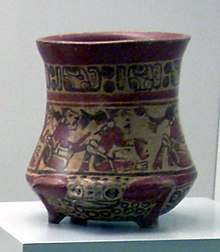
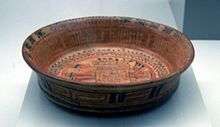
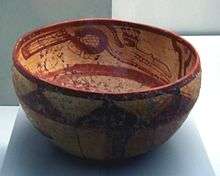
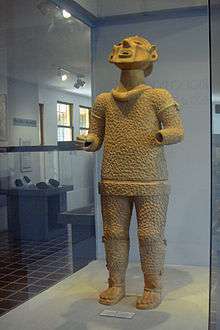
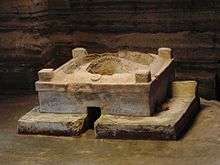
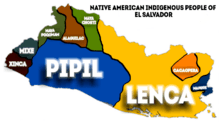
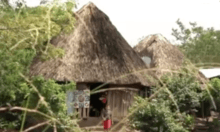
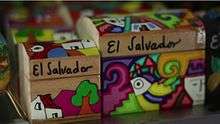
Historically El Salvador has had diverse Native American cultures, coming from the north and south of the continent along with local populations mixed together. El Salvador belongs to both to the Mesoamerican region in the western part of the country, and to the Isthmo-Colombian Area in the eastern part of the country, where a myriad of indigenous societies have lived side by side for centuries with their unique cultures and speaking different indigenous languages of the Americas in the beginning of the Classic stage.
The Lenca people are an indigenous people of eastern El Salvador where population today is estimated at about 37,000. The Lenca was a matriarchal society and was one of the first civilizations to develop in El Salvador and were the first major civilization in the country. The pre-Conquest Salvadoran Lenca had frequent contact with various Maya groups as well as other indigenous peoples of Central America. The origin of Lenca populations has been a source of ongoing debate amongst anthropologists and historians. Throughout the regions of Lenca occupation, Lenca pottery is a very distinguishable form of Pre-Columbian art. Handcrafted by Lenca women, Lenca pottery is considered an ethnic marking of their culture. Some scholars have suggested that the Lenca migrated to the Central American region from South America around 3,000 years ago, making it the oldest civilization in El Salvador. Guancasco is the annual ceremony by which Lenca communities, usually two, gather to establish reciprocal obligations in order to confirm peace and friendship. Quelepa is a major site in eastern El Salvador. Its pottery shows strong similarities to ceramics found in central western El Salvador and the Maya highlands. The Lenca sites of Yarumela, Los Naranjos in Honduras, and Quelepa in El Salvador, all contain evidence of the Usulután-style ceramics.
The Cacaopera people are an indigenous people in El Salvador who are also known as the Matagalpa or Ulua. Cacaopera people spoke the Cacaopera language, a Misumalpan language. Cacaopera is an extinct language belonging to the Misumalpan family, formerly spoken in the department of Morazán in El Salvador. It was closely related to Matagalpa, and slightly more distantly to Sumo, but was geographically separated from other Misumalpan languages.
The Xinca people, also known as the Xinka, are a non-Mayan indigenous people of Mesoamerica, with communities in the western part of El Salvador near its border. The Xinka may have been among the earliest inhabitants of western El Salvador, predating the arrival of the Maya and the Pipil. The Xinca ethnic group became extinct in the Mestizo process.
El Salvador has two Maya groups, the Poqomam people and the Ch'orti' people. The Poqomam are a Maya people in western El Salvador near its border. Their indigenous language is also called Poqomam. The Ch'orti' people (alternatively, Ch'orti' Maya or Chorti) are one of the indigenous Maya peoples, who primarily reside in communities and towns of northern El Salvador. The Maya once dominated the entire western portion of El Salvador, up until the eruption of the lake ilopango super volcano. Mayan ruins are the most widely conserved in El Salvador and artifacts such as Maya ceramics Mesoamerican writing systems Mesoamerican calendars and Mesoamerican ballgame can be found in all Maya ruins in El Salvador which include Tazumal, San Andrés, El Salvador, Casa Blanca, El Salvador, Cihuatan, and Joya de Ceren.
Alaguilac people were a former indigenous group located on northern El Salvador. Their language is unclassified. The Alagüilac language is an undocumented indigenous American language that is now extinct. The Alaguilac ethnic group became extinct during the Mestizo process.
The Mixe people is an indigenous group that inhabited the western borders of El Salvador. They spoke the Mixe languages which are classified in the Mixe–Zoque family, The Mixe languages are languages of the Mixean branch of the Mixe–Zoquean language family. The Mixe ethnic group became extinct during the Mestizo process.
El Salvador has two Nahua peoples, The Mangue language people and the Pipil people. The Mangue people, also known as Chorotega, are an extinct Oto-Manguean language people, indigenous to eastern El Salvador border, near the gulf. The Pipils are an indigenous people who live in western El Salvador. Their language is called Nahuat or Pipil, related to the Toltec people of the Nahuatl Nation and were speakers of early Nahuatl languages. However, in general, their mythology is more closely related to the Maya mythology, who are their near neighbors and by oral tradition said to have been adopted by Ch'orti' and Poqomam Mayan people during the Pipil exodus in the 9th century CE. The culture lasted until the Spanish conquest, at which time they still maintained their Nawat language, despite being surrounded by the Maya in western El Salvador. By the time the Spanish arrived, Pipil and Poqomam Maya settlements were interspersed throughout western El Salvador. The Pipil are known as the last indigenous civilization to arrive in El Salvador, being the least oldest and were a determined people who stoutly resisted Spanish efforts to extend their dominion southward. The Pipil are direct descendants of the Toltecs, but not of the Aztecs.
Evidence of Olmec civilization presence in western El Salvador can be found in the ruin sites of Chalchuapa in the Ahuachapan department. Olmec petroglyphs can be found on boulders in Chalchuapa portraying Omlec warriors with helmets identical to those found on the Olmec colossal heads. This suggest that the area was once an Olmec enclave, before fading away for unknown reasons. The Olmecs are believed to have lived in present-day El Salvador as early as 2000 BC. The 'Olmec Boulder, ' is a sculpture of a giant head found near Casa Blanca, El Salvador site in Las Victorias near Chalchuapa. "Olmecoid" figurins such as the Potbelly sculpture have been found through this area, in fact most are described as looking primeval proto-Olmec.
Modern Native American people
According to the Salvadoran Government, about 0.23% of the population are of full indigenous origin. The largest most dominant Native American groups in El Salvador are the Lenca people, Cacaopera people, Maya peoples: (Poqomam people/Chorti people) and Pipil people.
The number of indigenous people in El Salvador have been criticized by indigenous organizations and academics as too small and accuse the government of denying the existence of indigenous Salvadorans in the country. According to the National Salvadoran Indigenous Coordination Council (CCNIS) and CONCULTURA (National Council for Art and Culture at the Ministry of Education ), approximately 600,000 or 10 per cent of Salvadorian peoples are indigenous. Nonetheless, very few natives have retained their customs and traditions, having over time assimilated into the dominant Mestizo/Spanish culture. The low numbers of indigenous people may be partly explained by historically high rates of old-world diseases, absorption into the mestizo population, as well as mass murder during the 1932 Salvadoran peasant uprising (or La Matanza) which saw (estimates of) up to 30,000 peasants killed in a short period of time. The 1932 Salvadoran peasant massacre occurred on January 22 of that year, in the western departments of El Salvador when a brief peasant-led rebellion was suppressed by the government, then led by Maximiliano Hernández Martínez. The Salvadoran army, being vastly superior in terms of weapons and soldiers, executed those who stood against it. The rebellion was a mixture of protest and insurrection and ended in ethnocide, claiming the lives of anywhere between 10,000 and 40,000 peasants and other civilians, many of them indigenous people. Many authors note that since La Matanza the indigenous in El Salvador have been very reluctant to describe themselves as such (in census declarations for example) or to wear indigenous dress or be seen to be taking part in any cultural activities or customs that might be understood as indigenous. Departments and cities in the country with notable indigenous populations include Sonsonate (especially Izalco, Nahuizalco, and Santo Domingo), Cacaopera, and Panchimalco, in the department of San Salvador
The Salvadoran Cabalgador (Cowboy)
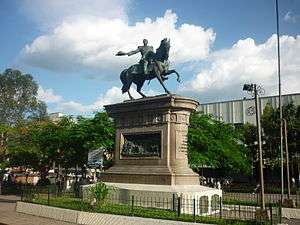
A Cabalgador (Spanish: Cavalry, Horseman, Horserider) is a Salvadoran horse-mounted livestock herder (cowboy) of a tradition that originated on the Iberian Peninsula and was brought to Central America by Spanish settlers. It has deep historic roots tracing back to Spain and the earliest European settlers of the Americas. Cabalgador is a Spanish word for a horseman rider and herder. It derives from Cabalgar and Cabalgadura meaning "rider".
Early Cabalgadores in El Salvador were originally a mixture of part Spanish and American Indigenous, Mestizo, Indigenous and Pardo men who lived in the countryside and had a strong culture which has shaped El Salvador's over all distinctive rural culture, tradition, folklore, and music, having a strong rural countryside culture. The origins of the Cabagador tradition in El Salvador come from Spain, beginning with the hacienda system of medieval Spain. This style of cattle ranching spread throughout much of the Iberian peninsula and later, was imported to the Americas. During the 16th century, the Conquistadors and other Spanish settlers brought their cattle-raising traditions as well as both horses and domesticated cattle to the Americas.
The traditions of Spain were transformed by the geographic, environmental and cultural circumstances. In turn, the land and people of the Americas also saw dramatic changes due to Spanish influence. In El Salvador's case, a massive, almost complete deforestation to make way for agriculture and animal herding, El Salvador lost virtually all of its primary rain forests. The Spanish haciendas which in El Salvador's case were owned by a military middle class and wealthy military cavalry Spaniards who spoke in voseo, a Spanish speech that originates from medieval Spain, this way of speech is used by all Salvadorans today, Salvadoran Spanish which has shaped and defined Salvadorian-ism dating back to the 16th and 17th centuries.
Among common horse riders, there were also military and police Cavalry troopers called (Guardias) National Guard (El Salvador) who were infamously feared due to their abuse and unlimited use of power over the population, patrolling the rural areas keeping order. The Cabalgadores would prove to be vital up until the mid 20th century, especially for the military and the campesinos who would be influenced by the revolution, most of the guerrillas in El Salvador's civil war, were poor citizens who rode horses in the rural mountains.
Today being a Cabalgador is a symbol and idealized representative of machismo, virility and a display of either chauvinism but also with vestiges of chivalrous attitudes. They also are seen as poor campesinos (peasants), and are seen as people without manners or lacking the sophistication of an urbanite, akin to a redneck. However, being a campesino is also used in a neutral or positive context or self-descriptively with pride because it describes a humble and hard worker person.
Most male children in El Salvador as young as five are raised and began working in a cowboy atmosphere, working on ranches along with their fathers and older members of the family learning about agriculture and livestock, herding animals throughout much of El Salvador tending cattle, in an all-male environment which have also retain the machismo culture in El Salvador. Most men in El Salvador, particularly in the towns in the rural countryside including mayors wear elements of cowboy clothing. Cabalgadores in El Salvador dress in cowboy hats and carry machetes also known as Corbos in El Salvador, and they listen to nueva canción guitar type music.
See also
References
- ↑ Campbell, Lyle. (1985) The Pipil language of El Salvador. Mouton to grammar library (no. 1). Berlin: Mouton Publishers.
- ↑ Trajes típicos Archived 2008-08-21 at the Wayback Machine.
- ↑ Trajes folkloricos de El Salvador


